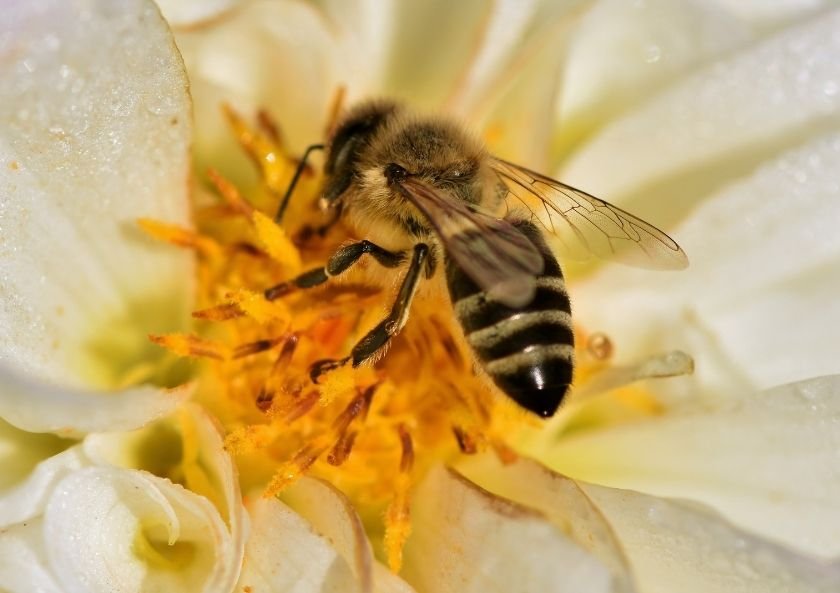The spring season, which is starting to make itself felt, makes most of us happy. However, for allergy sufferers, bees hovering around the colorful blooms in spring can cause serious life-threatening problems. Since bee allergy can cause systemic reactions, treatment is extremely important in bee allergy. The treatment of bee allergy consists of 3 steps. Avoid bees, take precautions. Inject an adrenaline auto-injector immediately if signs of anaphylaxis occur.
How can we take action against bees?
Honey bees are generally not aggressive. Especially honey bees do not sting when they are not provoked, so it is necessary to avoid things that will attract honey bees to us.
Wild bees are more aggressive and can be found on many foods when we are in the same environment, so some precautions will help us stay away from bees.
Some precautions against bees;
- Do not walk barefoot on grass or where bees feed.
- Do not drink from open beverage cans. Bees can get inside the boxes and sting when compressed.
- Keep food covered when eating out.
- Do not use sweet-smelling perfume, hairspray or deodorant.
- Avoid wearing brightly colored clothes with floral prints.
- Wear long pants, long sleeved shirts, socks, shoes and work gloves when working outside.
- Be cautious near bushes, eaves, and attics, and be vigilant around dumpsters and picnic areas.
- Pay attention to the nests of bees and never interfere, get professional support.
What are the drug treatments for bee allergy?
If a bee sting is present in a bee allergy, the sting should be carefully removed.
Local mild skin itching, redness and 1-2 cm swelling usually do not require treatment.
If itching is too much, antihistamine creams can be given for a few days.
Since there may be more redness and swelling in local wide reactions, cold compresses with ice can be applied.
Oral or intramuscular antihistamines can be given, if there is a lot of pain, painkillers can be given. Oral corticosteroid-containing tablets can be given as a low dose for several days.
Sometimes, cellulitis or local infections may develop where the bee stings, and in these cases, antibiotics can be given.
It is recommended to start these treatments within 1-2 hours after the bee sting.
Treatment of severe systemic reactions is more important in bee allergy.
In bee allergy, after a bee sting, sometimes within minutes, the picture we call allergic shock, which ends with urticaria, shortness of breath, dizziness and fainting, may develop throughout the body.
Patients at risk of anaphylaxis should have an adrenaline auto-injector with them. Patients with a history of anaphylaxis should be prescribed an adrenaline auto-injector and told how to use it.
If itching, redness, shortness of breath, and dizziness have started in the body within minutes after the bee sting, adrenaline auto-injectors containing adrenaline should be administered immediately by the patient or his/her relatives.
Adrenaline auto-injectors are life-saving for the patient, but since anaphylactic shock can recur within 6 hours, he should definitely go to the hospital or health center with emergency conditions afterwards.
Anaphylactic shock treatment must be done in health centers with appropriate emergency response conditions.
Is allergy vaccine (immunotherapy) necessary in bee allergy?
The most serious life-threatening reaction in bee allergy is anaphylactic shock. Patients who have experienced anaphylactic shock after a bee sting should be seen by an allergist.
Allergy vaccine (immunotherapy) treatment is a treatment approved by the World Health Organization. The most important treatment in bee allergy is vaccine treatment. It is known that this treatment provides 90-97% complete cure. Vaccine treatment applied in bee allergy is continued for at least 3-5 years.
Re-infestation by the allergic bee does not cause anaphylactic shock in people who have been treated with vaccines. Therefore, the most important treatment in bee allergy is vaccine treatment. Until the effectiveness of the bee vaccines is seen, it is recommended that the patients carry an adrenaline auto-injector with them until the maintenance treatment.
Bee allergy is treatable by allergy specialists. Therefore, it must be seen and evaluated by allergy specialists.



